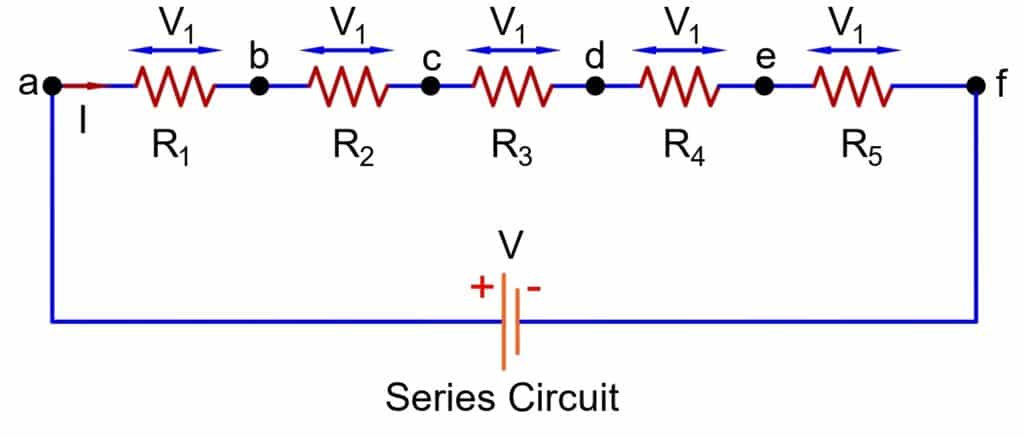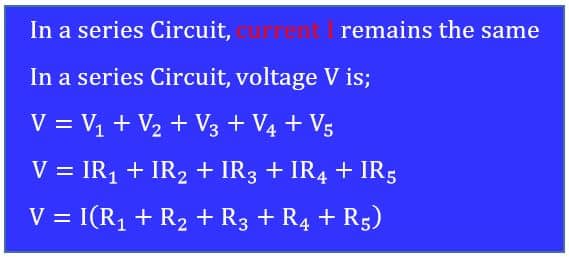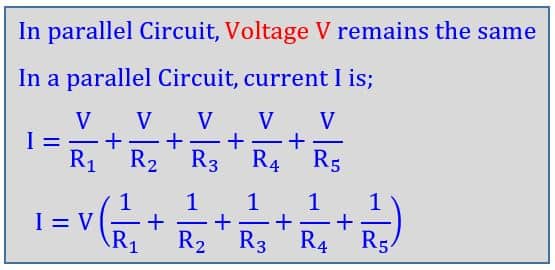The same amount of current flows in all the components of the a series circuit, whereas in a parallel circuit different amount of current flow in the parallel branches of the circuit. Thus, the major difference between series and the parallel circuit is the magnitude of current that flows through each of the components.
In this article, we will discuss the difference between series and parallel circuit. A series and parallel circuits are two basic and very important circuits in electrical engineering. We can connect the circuit in series and parallel. The series and parallel circuits are prime important for electrical, electronics, physics, instrumentation and robotics.
What is a Series Circuit ?
The components in the circuits is connected in the cascaded manner in the series circuit. The tail of the first component connects with the head of the second component, and the final connection of series circuit connects to two ends of the battery.
We can understand the series circuit with the help of below diagram.

In the above circuit, the resistors are connected in cascaded fashion and they have series connection. The current in the series circuit remains the same throughout the circuit. The potential difference across the resistor may be the same or different depending on the resistance value of the resistor.

If the resistance value are the same then there will be equal potential drop(V=IR) across all the resistors. If value of the resistance is different, then the potential drop across all the resistors will be different. The sum of all the voltage drop across the resistors will be equal to supply voltage.
What is a Parallel Circuit ?
In a parallel circuit, the connection orientation of the components are different than the series connection. In the parallel circuit, the heads of each component are connected together and the common point is connected to one end of the battery, and the tails of each component are connected together and the common point so formed is connected to second end of the battery.

As shown in above picture, five resistances are connected in the parallel. The circuit has five branches in which the total circuit current distributes. The current(I=V/R) in each resistor may be the same or different, depending on the resistance.

If all the resistors have the different resistance, then the current flowing through each resistor is different. However, the potential across each resistor will be the same because the both ends of each resistor is at the same potential of the battery..
Thus, due to multiple branches in the parallel circuit, the total supply current divides into multiple branches because the voltage across the each branch is the same.
Difference between a series circuit and a parallel circuit
| Series | Parallel |
| The same amount of current flows through the each component. | In each branch, there may be the same or different amount of current depending on the value of the resistances. |
| In an electrical circuit, components are arranged in a cascaded fashion. | The components are connected in parallel to each other in a parallel circuit.. |
| The voltage across each resistor is different and the sum of voltage across each resistor is equal to the supply voltage or voltage across the series combination of the circuit. | When electrical devices are connected in a parallel circuit, the voltage across each of the devices is the same. Also, the polarities are the same |
| The series circuit gets opens If one component breaks down. | In the case of breaks down of one component the other parallel circuits keeps working. The house wiring is in parallel circuit because it allow other circuits to remain healthy in case of failure of one circuit. |
| The voltage across the series combination Vt = V1 +V2 +V3+V4 ….+ Vn | The voltage across the parallel combination V1=V2=V3= Vt |
| The equivalent resistance of the series circuit is Req= R1+R2+R3 +…….+Rn | The equivalent resistance of the paralle circuit is 1/R = 1/R1 +1/R2 + !/R3 +……. +1/Rn |
| The equivalent resistance of the series circuit is always more than the resistance of individual resistor. | The equivalent resistance of the parallel circuit is always less than the resistance of individual resistor. |
| It needs less wire. | It requires more wires. |